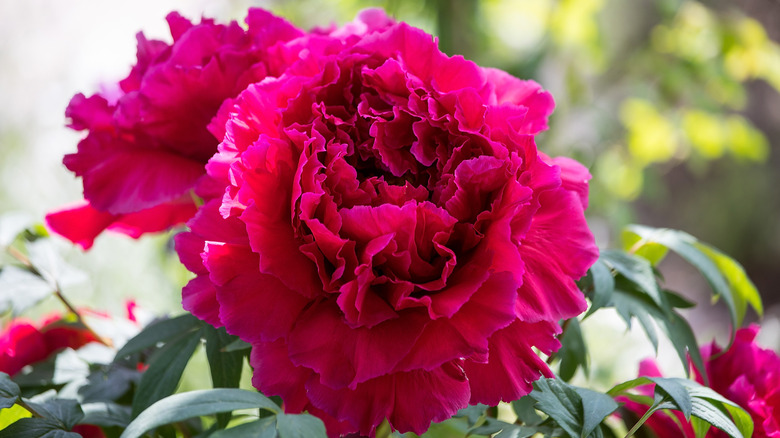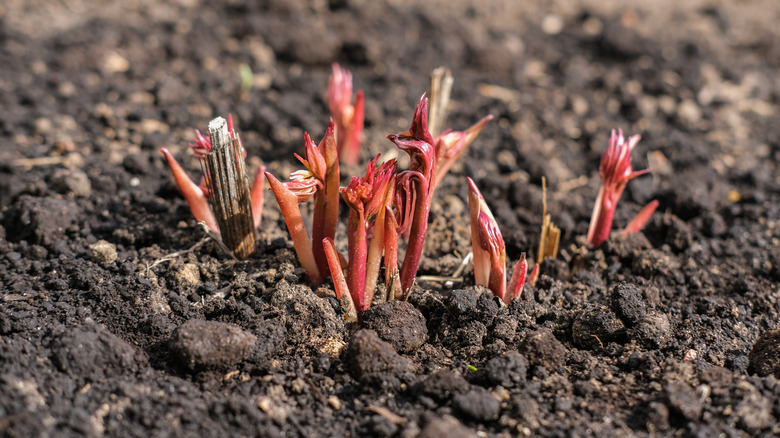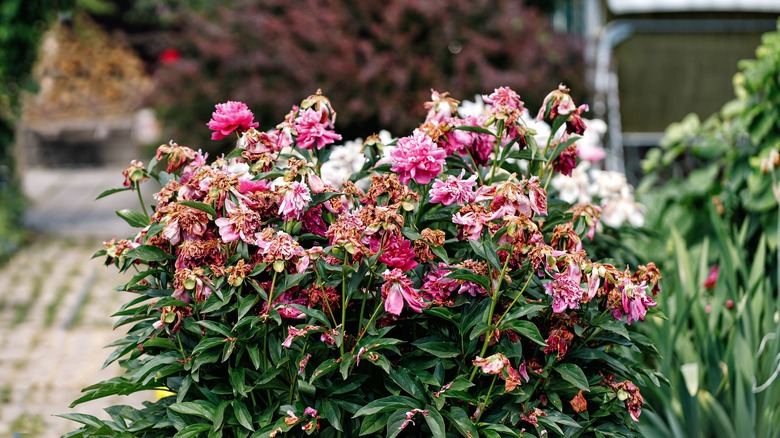The Best Method For Watering Peonies
Peonies (Paeonia), the king of flowers, are ornamental plants prized for their intoxicating scent and colorful flowers that bloom in a range of hues, including ruby red, vivid pink, cheery yellow, and buttery white. This hardy perennial is a popular garden plant that will keep blooming year after year if watered right. Plant your peony bushes in fertile, well-draining soil, and give the soil around the newly planted ones an inch of water every five to seven days to let the soil settle around the roots. For matured peony plants, it's best to water the soil and root every 10-14 days, depending on the weather conditions.
The thick storage roots of peonies grow both vertically and horizontally, and once established, the plant is considered drought-tolerant. Peonies should not be overwatered; the plant's soil should be kept "slightly" moist, not overly so. Giving your peonies the right amount of water is essential to encourage their flowers to bloom and grow.
How to water peonies
Peonies should be watered early in the morning instead of the afternoon to allow the plant to absorb moisture. You can hand water your peonies or set up a drip irrigation system to supply water at exact intervals. Water the soil surrounding your established peonies deeply every 10 to 14 days in the spring to promote their growth. Note this can vary, depending on location and weather conditions. Your peony bushes might require water sooner if they don't receive any rainfall, are subject to extreme heat, begin wilting, or the foliage becomes discolored.
To adequately gauge your plant's watering needs, check the soil about 2 inches down — digging deeper might damage the roots. Touch the soil: If it's dry, it's time to water the peonies. You can even invest in a moisture meter to determine your plant's watering needs.
Water the newly planted peonies immediately upon sowing them in the ground and give them an inch or two of water every week for the first year to help them establish themselves. Keep watering the plants after they flower to support their growth the next year, but don't water them after they turn dormant.
Avoid overwatering or underwatering your peonies
Though peonies need slightly damp soil to bloom, they can survive without water for some time. Overwatering your peonies will lead to waterlogged soil, promoting root rot and fungal infections. Root rot will cause the leaves to turn yellow, the foliage to begin drooping, and the roots to give off an unpleasant smell or look brown.
Similarly, overwatering your peonies will make them susceptible to black or brown spots caused by botrytis blight, a fungal infection. They may be attacked by other fungi, too, such as phytophthora blight, causing leaves and crowns to rot. Heed these indications and remove the bad-smelling roots to repot the plant. Prune the spotty leaves and avoid watering your peonies till the topsoil dries out.
But if your plant's leaves start to shrink and turn brown, it's a clear sign of underwatering. Dry, cracked soil and stilted flower growth are other symptoms of your peonies not receiving enough water. Water your peonies at once, avoiding the foliage, and apply some mulch to retain soil moisture and prevent weed growth. You may even add some fertilizer to the soil to promote the flowers to bloom and successfully grow peonies.


